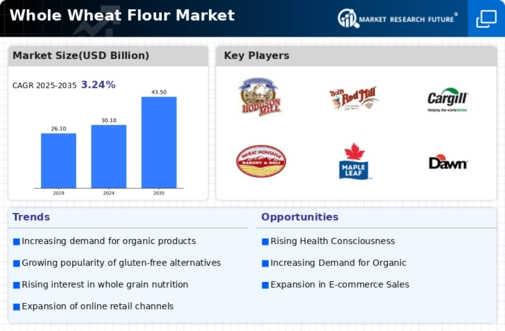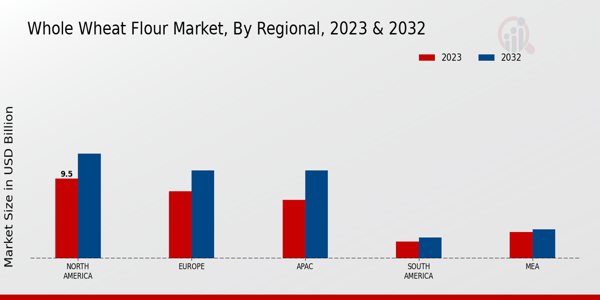The Whole Wheat Flour Market is experiencing significant growth, driven by the rising consumer demand for healthier dietary options and the increasing awareness of the nutritional benefits associated with whole wheat products. The competitive landscape of this market is characterized by a diverse range of players, from large multinational companies to small regional producers. As the market expands, companies are focusing on innovation in product offerings, improving quality standards, and enhancing distribution networks to capture consumer interest.
Pricing strategies, promotional campaigns, and brand positioning also play critical roles in this competitive arena as companies seek to differentiate their products and expand their market share. The ongoing trend towards organic and non-GMO products further influences competition as consumers increasingly prefer whole wheat flour that aligns with their health-conscious lifestyles.Wilson's Bread has established a strong presence in the Whole Wheat Flour Market thanks to its commitment to quality and innovation. The company is renowned for its extensive product range, which includes various whole wheat flour types catering to different consumer preferences and needs.
With a focus on using premium whole wheat grains, Wilson's Bread ensures that its products not only meet quality standards but also deliver superior nutritional benefits. The company's dedication to sustainability practices enhances its reputation as a responsible choice in the market, appealing to environmentally conscious consumers. Additionally, Wilson's Bread's strategic partnerships with retailers and efficient distribution networks contribute to its impressive market reach and enhance its ability to maintain a competitive edge in this dynamic industry.Hodgson Mill is another key player in the Whole Wheat Flour Market that commands respect for its high-quality offerings and commitment to natural ingredients.
The company prides itself on a long-standing tradition of milling flour with meticulous attention to detail, ensuring that its whole wheat flour retains the natural nutrients and flavor of the wheat kernel. Hodgson Mill's focus on non-GMO production and organic options positions it favorably among consumers seeking wholesome and healthy alternatives. Its vast array of whole wheat flour products caters to various baking needs, from bread making to pastries, providing versatility to consumers.
Hodgson Mill's robust marketing strategies and strong brand loyalty among health-conscious buyers underpin its success in the competitive landscape, allowing it to sustain growth and thrive in an evolving market.



















